Nikko Travel Guide
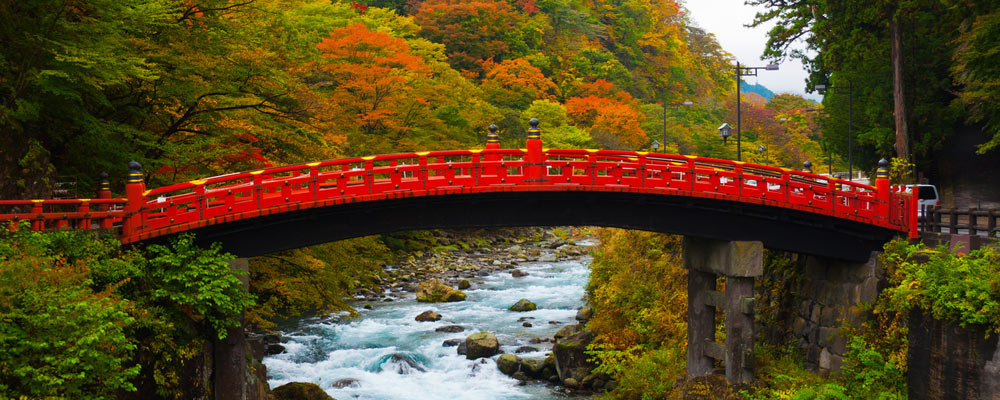
 Overview
Overview
A city situated in the northern part of Kanto, in Tochigi Prefecture, Nikko serves as the gateway to the Nikko National Park, which is best known for its beautiful and unique mausoleum and shrine of Tokugawa Ieyasu. In addition, it is also home to many hot springs and is surrounded by mountains and forests, offering amazing natural scenery.
 When To Go
When To Go
- In winter (December – February), Nikko experiences a lot of snow and its daily temperatures, averaging between -5 and 0 degrees, are much lower than the rest of Honshu because it sits at a higher altitude.
- In summer (June – August), the city is cool (with temperatures remaining below 20 degrees) but wet, especially in August when the precipitation levels are at their highest for the year.
- In spring time (March – May), the weather is cool and not very rainy, so hanging out at the best cherry blossom viewing spots is a popular activity.
- In autumn (September – November), particularly at the beginning of the season, expect some rainy days while you enjoy the autumn foliage.
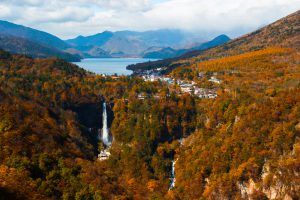
Akechidaira Observatory
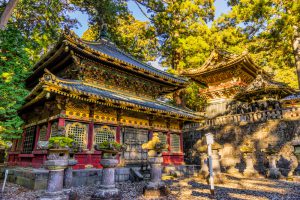
Toshogu Shrine
 Things To See
Things To See
Go to the Toshogu Shrine
The site of the resting place of the powerful leader of the Tokugawa Shogunate, Tokugawa Ieyasu, the Toshogu Shrine is an important landmark in the city of Nikko. It is a vast shrine complex in the forest and is made up of several buildings. Its structures, such as a five-storey pagoda, storehouses and gates, are lavishly decorated, with designs and carvings that can only be seen at this site. Three of the most famous of these unique carvings are the Sozonozo Elephants, the Nemurineko and the monkeys.
Take a ride at Edo Wonderland (Nikko Edomura)
A small theme park that depicts life in Japan during the Edo Period, Edo Wonderland comprises traditional, Edo-style shops, museums and restaurants, with park staff and employees dressed in Edo Era costumes. Visitors can also rent costumes for a fee to more fully experience life during the 1600s to 1800s; wearing traditional Japanese attire while touring the park’s attractions. Other facilities available are souvenir shops that sell toy weapons, teapots and woodblock prints; a live show theatre; and wax museums that feature torture and prison scenes from the battle years.
See Taiyuinbyo
Taiyuinbyo is the resting place of Tokugawa Iemitsu, grandson of Ieyasu and third shogun of the Tokugawa Shogunate. Just like Toshogu Shrine, it is adorned by intricate designs and styles. Its architecture and layout are a fusion of Shinto and Buddhist influences, with walking paths that lead to the different gates, towers, halls and the mausoleum.
Visit the Rinnoji Temple.
Considered to be the most important temple in Nikko, the Rinnoji Temple is an ancient Buddhist structure founded by a monk named Shodo Shonin, who brought Buddhism to the city back in the 8th century. Its main building is known as the Sanbutsudo and is where large, gold-coated, wooden statues of the three mountain deities of Nikko are kept (Bato-Kannon, Senju-Kannon, and Amida).
Explore the Futarasan Shrine
Just a few minutes’ walk from Toshogu is the Futarasan Shrine, which is a shrine founded by the same Buddhist monk who brought Buddhism to the city (Shodo Shonin). It is a structure that honours the deities of the most sacred mountains of Nikko — Mount Taro, Mount Nyoho and Mount Nantai.
Learn at Tamozawa Imperial Villa Memorial Park
Featuring architectural styles and designs from the Edo Period and modern Meiji Era, Tamozawa Imperial Villa Memorial Park consists of the Tamozawa Imperial Villa, a large, old wooden building with 106 rooms, and a well-maintained Japanese style landscape garden that is famous for its autumn colours.
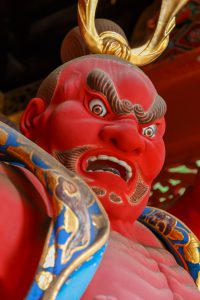
Benevolent Kings at Nio-mon Gate of Taiyuinbyo
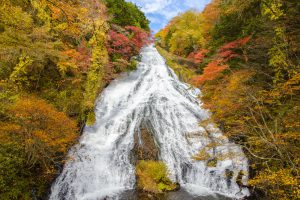
Yudaki Falls
 Where To Explore
Where To Explore
- Kanmangafuchi Abyss – A gorge formed after the eruption of Mount Nantai, the Kanmangafuchi Abyss offers a riverside walking trail that is a few hundred metres in length, lined by 70 stone Jizo statues.
- Yumoto Onsen – A hot spring town within the Nikko National Park vicinity, Yumoto offers many lovely hiking trails around Lake Yunoko, ryokan and open air hot spring baths. In the middle of October, the town transforms into a mesmerising paradise of autumn colours, with its dense and thriving forests of different species of trees.
 Getting Around
Getting Around
Bus services link the various attractions around Nikko. A one-way ticket for travel within central Nikko costs 310 yen, and a one-day bus pass costs 500 yen. For visitors going to farther destinations from the city centre, such as Yumoto Onsen, a one-way ticket costs 1,150 yen and a 2-day pass is 3,000 yen.












